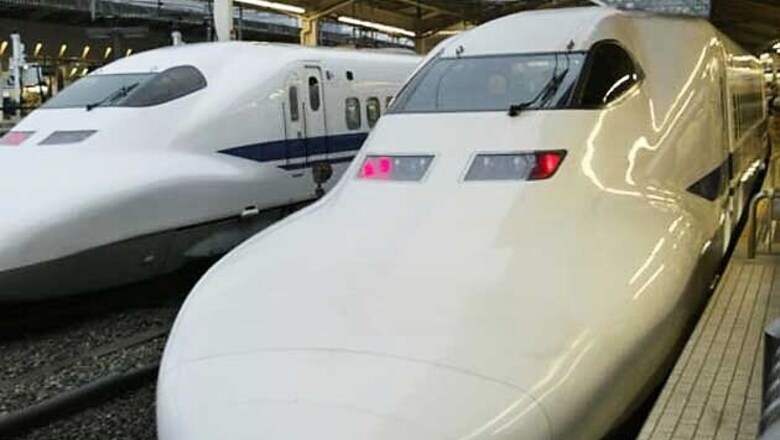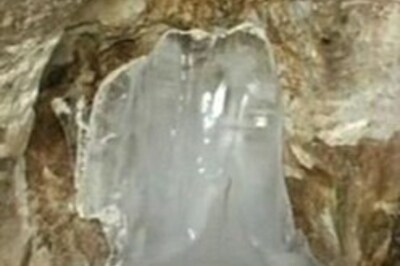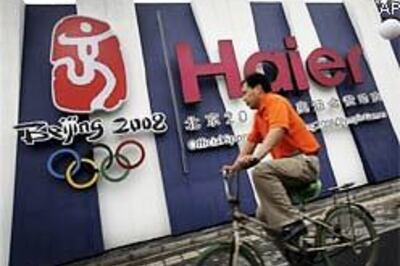
views
Omiya: Fifty years ago, the first bullet train pulled out of Tokyo station and hurtled across the countryside, heralding Japan's arrival as a modern economic powerhouse with a transport system soon to become the envy of the world.
Less than two decades after a bitter World War II defeat that left much of the country in ruins, Japan was at the cutting edge with its sleek, airplane-shaped "shinkansen" that glided over great distances of newly-laid track.
"With the start of the shinkansen, we had a feeling that the starving time would end and Japan would change dramatically," recalled Fumihiro Araki, a former railway engineer.
"The shinkansen aimed to be the world's fastest train; it gave people hope and made Japan look forward," said 73-year-old Araki, now deputy director at the Railway Museum in Omiya, north of Tokyo, where the first engine, named "Hikari" (light), is housed.
"It was nicknamed the 'super express of dreams' and actually gave Japanese people a dream," he added.
The bullet train unveiled on October 1, 1964 was the centre piece of Japan's coming out party, which would begin in earnest a week later with the Tokyo Olympics. It proved Japan had caught up with and even surpassed, other developed countries.
Never mind that its construction had lumbered Japan with huge debts as its runaway budget spiralled out of control, or that public opposition to the project had been fierce.
The shinkansen connected Japan's two major urban centres, Tokyo and Osaka, by way of 66 tunnels and 96 bridges at speeds of up to 210 kilometres (130 miles) an hour, shortening travel times by a whopping two and a half hours.
That meant a businessman could travel from Tokyo to Osaka and back again in a day. It also lassoed both urban centres for people who wanted to go to concerts or to go shopping in the new consumer economy.
It also brought top tourist spots like the ancient capital of Kyoto much closer, and allowed passengers a majestic view of Mount Fuji as the gleaming new train sped past, simultaneously giving Japan the picture that sums up its celebrated blend of old and new.
"The shinkansen helped enhance Japan's economic competitiveness by accelerating the concentration of population and industries in Tokyo," said Osuke Itazaki, a senior analyst at SMBC Nikko Securities in Tokyo.
It was also credited with "boosting mobilisation of people around the country, and it is still playing that role," said Itazaki.




















Comments
0 comment